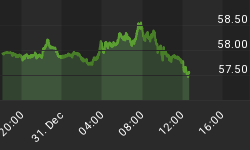U.S. nonfinancial corporations have enjoyed a surge in internal funds (book profits plus depreciation minus accrued taxes and dividends paid) in recent quarters. As shown in Chart 1, nonfinancial corporate internal funds in the third quarter soared to 125% of capital expenditures - a near record high. That is, corporations generated a lot of cash in the third quarter relative to their spending on capital goods and inventories.
Chart 1
Now, you would think that with all this "excess" cash being generated by Corporate America in recent quarters, it would not be tapping the credit markets for many funds. But, although nonfinancial corporate borrowing edged a touch lower in the third quarter, it has been trending up toward the highs of the late 1990s (see Chart 2). Moreover, corporate borrowing relative to capital outlays also has been trending higher again.
Chart 2
Why isn't Corporate America paying down debt if it is flush with cash and not on capital spending sprees? Perhaps because if it cut back on its borrowing, it might not be able to retire as much equity. Chart 3 shows that nonfinancial corporations retired their equities at a record annual pace of $446.2 billion in the third quarter. So, just as it was in the late 1990s, it is once again all about the stockholders, with the bondholders being relegated to chopped liver. When economic growth downshifts in 2006 and so does corporate profit growth, corporate bondholders may start to feel a little exposed. With less cash being generated by corporations with which to buy back shares, even stockholders may begin to feel a bit exposed.
Chart 3
It has come to my attention that some readers think that it is a misnomer to call my quasi-weekly essay "Positive Economic Commentary" given its sometimes negative spin on economic and financial market developments. Of course, the term "positive" is meant to connote the opposite of normative, as implied in the subtitle, "The economics of what is, rather than what you would like it to be." But here in the economic research department of The Northern Trust Company, we aim to please. Therefore, I am announcing a contest to rename this commentary. The person submitting the best title in the opinion of the judges (me) gets a one-year free email subscription to the commentary. The person submitting the worst title gets a lifetime subscription.
Happy Festivus, the holiday for the rest of us.
















